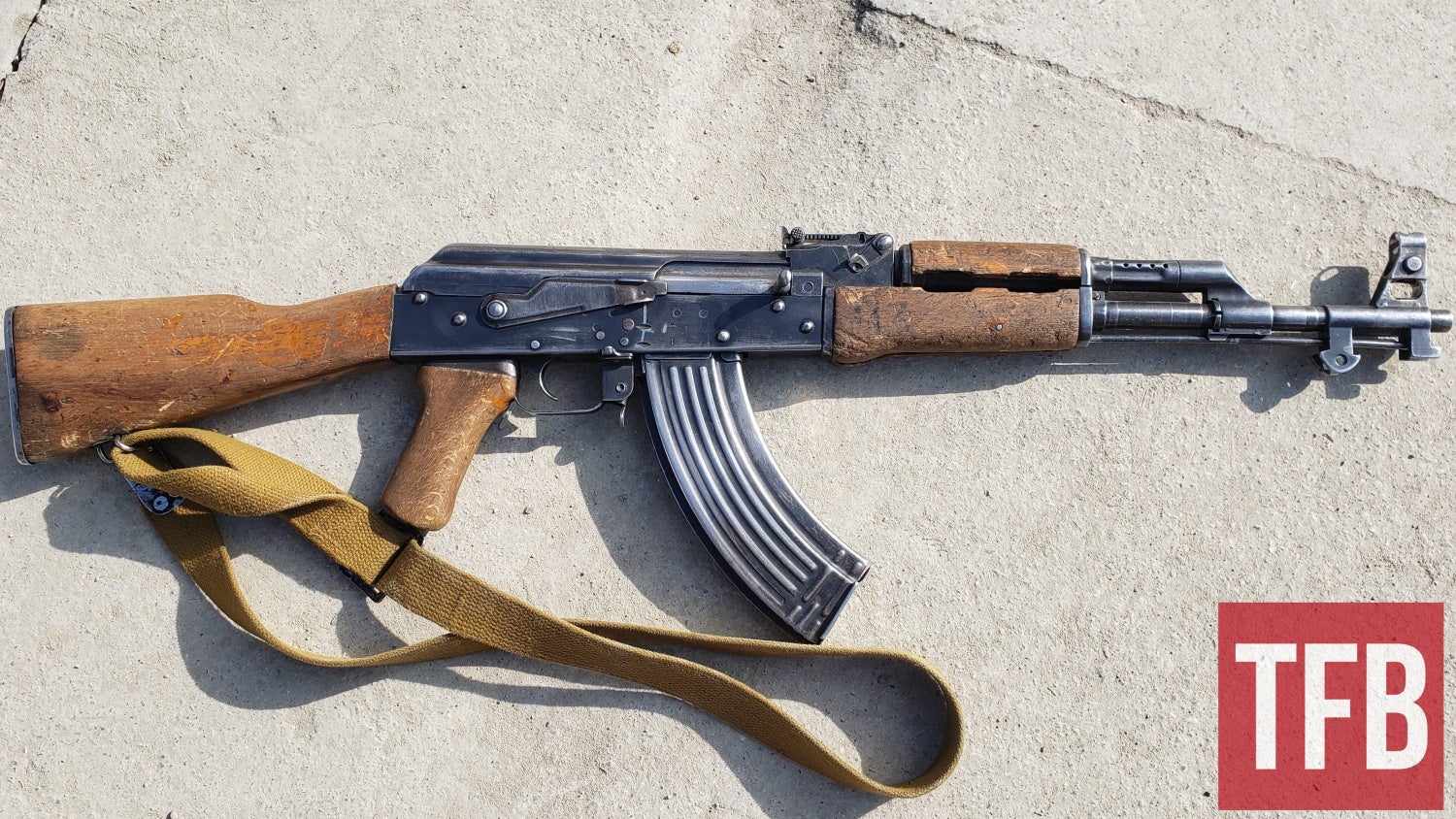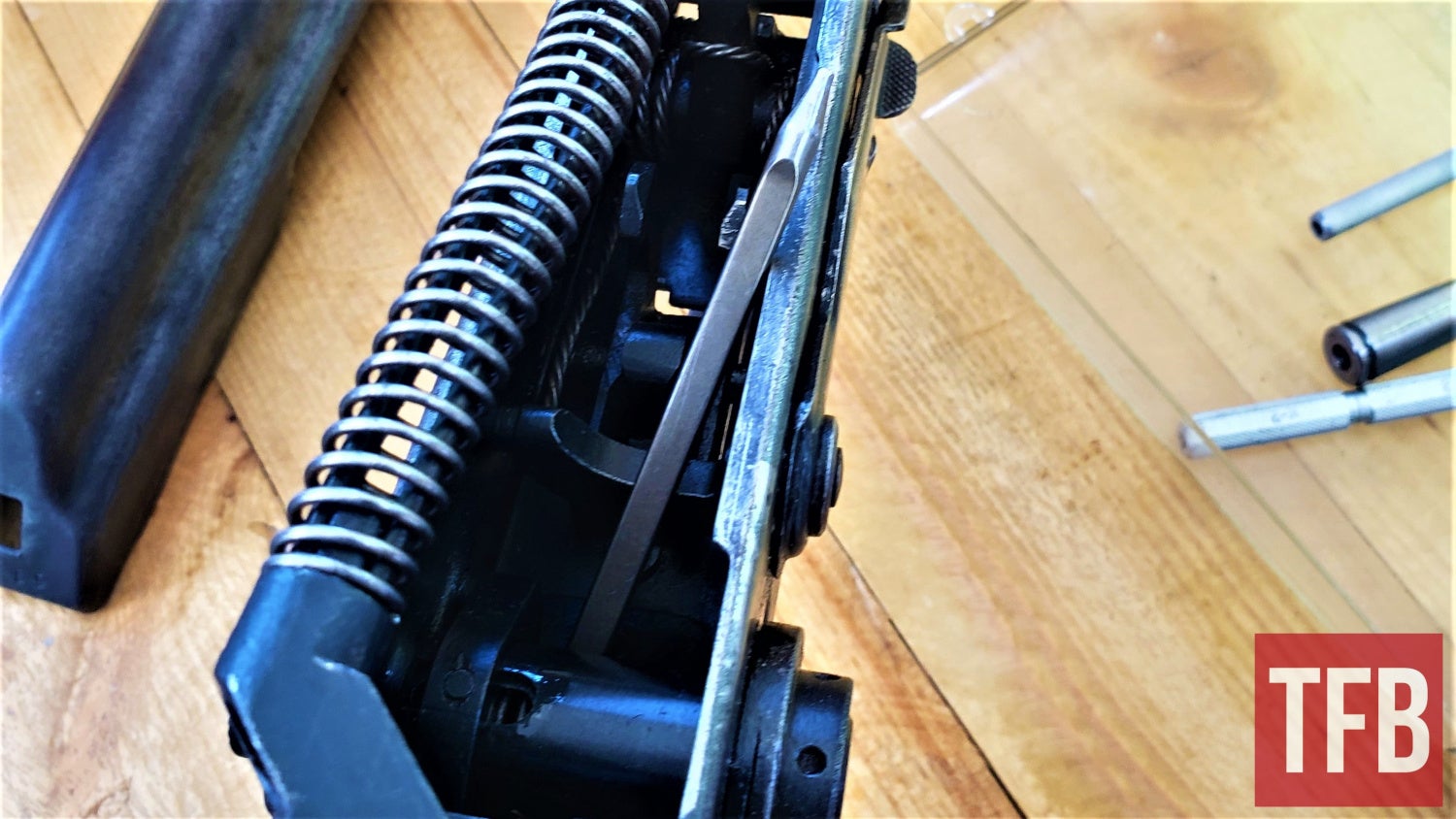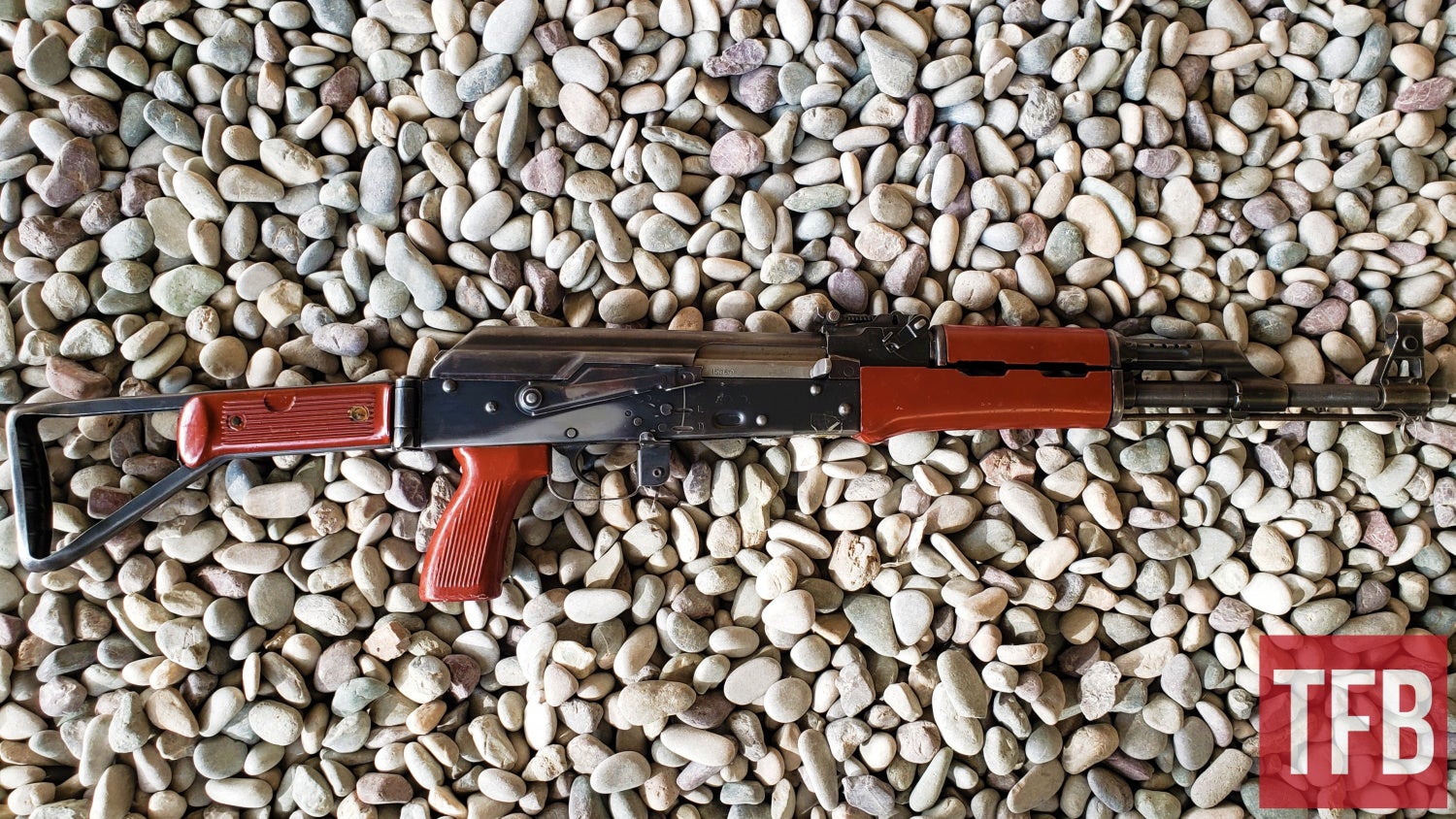Zarvan
ELITE MEMBER

- Joined
- Apr 28, 2011
- Messages
- 54,470
- Reaction score
- 87
- Country
- Location
Chinese AK – The Most Controversial Kalashnikov Variant. Part 1 – The Soviet Assistance
Posted 6 days ago in AK-47 / AK-74 / Everything AK, Defense, Editorial, History, Rifles by Vladimir Onokoy with 43 CommentsTags: ak, china, China didn't copy something, Guns from China, Kalashnikov

It is hard to find a place on Earth where people wouldn’t know what Kalashnikov is. Some know it through movies, some through video games, but a good portion of the world’s population have some firsthand experience with this rifle, since a Soviet, East European, or Chinese AK can be found almost anywhere.
Used by both rebels and police forces, AK rifles usually outlive regimes they serve and entire countries, changing owners and fighting for different causes and creeds, decade after decade.
But the majority of Kalashnikov rifles have nothing to do with their supposed country of origin – the Soviet Union. 34 countries produced AKs, and China, without a doubt, did the most to export those rifles to the far corners of the world left untouched by Soviet defense exports.

Charley Sheen in the ending of “Platoon” with an early Type 56 with a milled receiver. Photograph: Cinetext/MGM/Allstar
And among all AK variants, Chinese AKs have the most controversial reputation. Generally, people don’t expect much from a Chinese-made firearm. However, gun enthusiasts who managed to buy Polytechs and Legends that were available in the US in the late 80s and early 90s praise the quality of Chinese AKs.
But then again, those who encountered Chinese AKs in Africa and the Middle East during GWOT don’t seem to have much love for them. This controversy always amazed me.
It took me years of armorer work and research in Iraq, Afghanistan, Somalia, and Pakistan to understand why these guns deserved such a controversial reputation and why opinions about them are so polarized. But first, let’s see how it all began.
The secret diary of the Soviet engineer

Author, firing a prototype of AK Type 3, the first generation of the AK rifle that was produced internationally
The first Chinese AK was based on the Soviet AK Type 3, which went into mass production in 1955. And on the same year, the blueprints of this gun began their journey to China and several communist satellite states in Eastern Europe.
Generally, very little is known about the beginning of AK production in China. Thankfully, my good friend, one of the top AK experts in the entire world, found declassified documents that shed light on that topic.
The documents contain the full report and personal diary that was written by the Soviet engineer Barinov. This gentleman lived and worked in China from January 6, 1956, to June 6, 1957, and was tasked with establishing the production of AK rifles in the small and remote town of Beian. Located in the boundless fields of Heilongjiang Province in North East China, near the border with the Soviet Union, the factory didn’t even have a name but had a number – factory 626, better known to gun collectors as factory 66.

Stamp of the factory 626 – number “66” inside the triangle
His description of the factory reads like an opening to a horror story about a cursed village in the middle of nowhere. According to his report: “the factory was located in the abandoned military barracks of the Japanese army” which occupied these territories just a few years before, during WW2.
The reconstruction of the factory was deemed impossible because “the soil was totally unsuitable for permanent buildings and also funds were insufficient”. As a result, “all brick buildings developed vertical cracks” and “the roofs were only held by wooden beams”.
In that grim environment, the Chinese, with some help from Soviet specialists, managed to launch one of the finest AK factories in the world. Many of the now collectible semi-automatic pre-ban AKs imported to the US before 1993 came from this place.

Early Chinese Type 56 AK captured by US forces in 1964
Before AKs, this plant used to manufacture PPS submachine guns and Tokarev pistols. The establishment of AK production began in late 1955 and by November 1956, the first 5000 were already built, with the first 1000 being assembled from imported Soviet spare parts.
Those rifles built from Soviet parts are easy to identify. In fact, I had a couple of those in Afghanistan and Iraq. Unlike the standard Chinese AK that has an enclosed hooded front sight, the original Soviet front sight post was not enclosed.

A prime example of the early Chinese AK with the Soviet-made front sight post
The quality of early Chinese AKs
In 1957, factory 626 was tasked with building 50,000 rifles. Those early Chinese AKs with milled receivers were of the nicest Kalashnikovs ever made. In my reports, I marked those with the letters “M.B.” which stands for “milled beauty”.The quality of those rifles was officially recognized by US Army experts. Many of those rifles were shipped to North Vietnam and later captured by US troops and intelligence services.
In 1964, Springfield Armory conducted an “EXPLOITATION REPORT COMPARISON OF 7.62-MM ASSAULT RIFLES CHINESE COMMUNIST TYPE 56 AND SOVIET MODEL AK” for the US Army Foreign Science and Technology Center in Washington DC.

The title page of the Springfield Armory report
According to the report: “Both weapons indicated high-quality craftsmanship. The surface microfinish of the weapon components for both rifles is comparable to U.S. military standards”.
The Chinese AK rifles with milled receivers didn’t have their own designation. All Chinese Kalashnikovs with fixed stocks are called Type 56, underfolders are officially called Type 56-1, and rifles with side-folding stocks are called Type 56-2.
But keep in mind, the name Type 56 wasn’t just the name of the Chinese AK. It was also used for the Chinese copy of the Soviet SKS semi-automatic carbine and the copy of the belt-fed machine gun RPD.
Comrades parting ways

Chinese soldier hitting a Soviet border guard with his early Type 56. Credit RIA Novosti.
In the early 60s, China and the Soviet Union had a substantial disagreement over who is a better communist, and all Soviet technical assistance to China stopped.
In 1969, the political disagreement led to a quick and bloody war between China and the Soviet Union, known as the Damansky island border conflict. It was the first, but not the last time when AK was used against the Soviets, who invented it and even taught their future mortal enemy how to make it.
So the next generation of Chinese AKs was developed without any Soviet assistance and had plenty of interesting and original features. Stay tuned for part two.
Vladimir Onokoy
Vladimir Onokoy is a small arms subject matter expert and firearms instructor. Over the years he worked in 15 different countries as a security contractor, armorer, firearms industry sales representative, product manager, and consultant.His articles were published in the Recoil magazine, Small Arms Review, Small Arms Defence Journal, and Silah Report, he also created several video series such as “Gun myths”, “Kalashnikov: around the world”, “Larry Vickers in Russia” and “Kalashnikov: evolution” that are available on YouTube.
► Email: machaksilver at gmail dot com.
► Facebook: https://www.facebook.com/Vladimir-O...ns-and-other-unpopular-stuff-107273143980300/
► Instagram: https://www.instagram.com/vladonokoy/
► YouTube: https://www.youtube.com/user/machaksilver
Chinese AKs – The Most Controversial Kalashnikov Variant. Part 2 – How Type 56 Took Over the World
Posted 33 mins ago in AK-47 / AK-74 / Everything AK, Defense, Editorial, History, Rifles by Vladimir Onokoy with 1 CommentTags: ak, china, China didn't copy something, Kalashnikov, people's republic of china

In Part 1 of this article, I talked about early Chinese AKs and the humble beginnings of Kalashnikov rifle manufacturing in China. By 1956, China was building new factories and improving old ones with the help of Soviet engineers, and it seemed like nothing can break apart two great comrades – the Soviet Communist party and their Chinese counterparts. But while engineers were building factories in the middle of nowhere and Chinese workers were figuring out the intricacies of modern mass production, something else was happening far away from Chinese industry towns. Something that would change the course of history for the Chinese small arms industry.

Soviet propaganda poster: “Soviet-Chinese friendship is as strong as steel”. Apparently, it was more like pot metal.
In Moscow, in February 1956, during the 20th Congress of the Communist Party of the USSR, Soviet leadership suddenly acknowledged something no one expected to hear. Apparently, GULAGs, hundreds of thousands of mass executions, millions of arrests, and mass torture – all the things that were carried out by Stalin and his comrades, weren’t exactly an essential part of the plan to build a better Communist society.
Stalin and his cult of personality were officially denounced by the Soviet communist party, and the new party line was distributed among all the left-wing parties of the world. Obviously, Chinese comrades couldn’t tolerate such a blatant betrayal of core Communist values and the relationship between the two countries collapsed.
From the early 60s, the Chinese small arms industry was on its own. Now, if they wanted to get Soviet technology, they had to steal and reverse-engineer it. Even when chairman Mao Zedong finally joined the ranks of good communists in 1976, the relations between the countries did not improve.
The First Chinese-designed AK variants

Soviet AKM with stamped receiver
By 1959, Soviet factories were switching to stamped receivers on their AKs. Chinese weapon design engineers had to figure out the design themselves. As a result, the rivet pattern on the front of the receiver is different on Soviet and Chinese-made rifles.

Chinese type 56 with stamped receiver
The stamped Type 56 was a solid and durable rifle that was exported to the most remote and unwelcoming corners of the world. The Chinese AKs made for their own People’s Liberation Army (PLA) had hieroglyphs stamped on the right side of the receiver to mark the positions of the selector lever. The guns made for the export had markings L and D instead. “Full auto“ translates into 连/Lián (L), and “semi-auto” translates into 单/Dān (D).
Generally, Chinese AKs made for PLA had slightly better quality. I inspected hundreds of those guns in Afghanistan, they were issued to guards at one of the most important projects. Those rifles were truly a blessing for me in that country. The biggest challenge I faced as an armorer in Afghanistan was fake Pakistani-made AKs. Meaning that when you pick up a Russian AK in Kabul, there is a 50% chance that it is fake, and even if it is real, most probably, all of the internals were replaced with cheap locally made parts, so it is still gonna blow up in your hands when you attempt to fire it.
But when you pick up a Chinese AK, you don’t have that risk. Pakistani gunsmiths never attempted to copy Chinese guns, so when you see hieroglyphs on the receiver you know it is original.

The first Chinese “spiker” I encountered years ago was in Mogadishu, Somalia.
Another notable feature of this generation of Chinese AKs was the “spiker”. The idea was quite simple – Chinese weapon designers simply took a Chinese SKS bayonet mechanism and copy-pasted it on an AK with a wooden stock. Personally, I cannot attest to the effectiveness of this feature, but the bayonet sure looks intimidating.
In the early 80s, around 1983, semi-automatic Chinese AKs started to come to the US civilian market. There were many different importers, and if you want to know more, check out this excellent Chinese AK-47 Blog. It documents information about all the importers and all the different variants of Chinese AKs that were available in the US.

Chinese AK ad from the Shotgun News magazine, December 1987
Unfortunately, good times never last, and in 1994 the importation of Chinese AKs to the US stopped. The Bureau of Alcohol, Tobacco, and Firearms accused Norinco, a Chinese exporter of shipping illegal guns to the country. Since then Chinese AKs became collectible and the prices are rising every year.
The Propagation of Chinese AKs
There was one dimension of the Chinese AK export. They didn’t just sell the guns, they sold the technology. Several countries obtained the capability of domestic firearm manufacturing with China’s help.The first recipient of China’s AK technology was Albania. After this country left the Warsaw Pact in 1968 and cut ties with the Soviet Union, the Albanian communist government had only one strong shoulder to lean on – China. And China didn’t disappoint. In just a few years, around 1974, Albania began production of Automatiku Shqiptar model 56, a copy of Chinese Type 56.

ASH-78 Albanian AK variant that the author encountered in Kabul
Production continued until the early 1990s. Following the collapse of the communist government and economic disaster, in 1997, many of those rifles were looted from the government arsenals and ended up in different corners of the world. I first encountered Albanian AKs in Afghanistan, and a few years later my friend and fellow TFB writer Miles had exactly the same encounter.
The practice of technology transfer continued and in the next few decades Sudan, Iran, and Algeria received the same technology package. But that is a story for another time.
At the end of the XX century, the world was changing. The Soviet Union collapsed, and the Cold War ended, which opened a lot of opportunities in the global firearms market. The Chinese adapted like nobody else, and Chinese AKs were at forefront of those changes, which I will talk about in Part 3 of this article.
Vladimir Onokoy
Vladimir Onokoy is a small arms subject matter expert and firearms instructor. Over the years he worked in 15 different countries as a security contractor, armorer, firearms industry sales representative, product manager, and consultant.His articles were published in the Recoil magazine, Small Arms Review, Small Arms Defence Journal, and Silah Report, he also created several video series such as “Gun myths”, “Kalashnikov: around the world”, “Larry Vickers in Russia” and “Kalashnikov: evolution” that are available on YouTube.
► Email: machaksilver at gmail dot com.
► Facebook: https://www.facebook.com/Vladimir-O...ns-and-other-unpopular-stuff-107273143980300/
► Instagram: https://www.instagram.com/vladonokoy/
► YouTube: https://www.youtube.com/user/machaksilver
https://www.thefirearmblog.com/blog...alashnikov-variant-part-2-type-56-took-world/
@PanzerKiel @Tipu7 @Sulman Badshah @Kompromat @DESERT FIGHTER @RescueRanger @Irfan Baloch @Arsalan @Oscar
Last edited:











